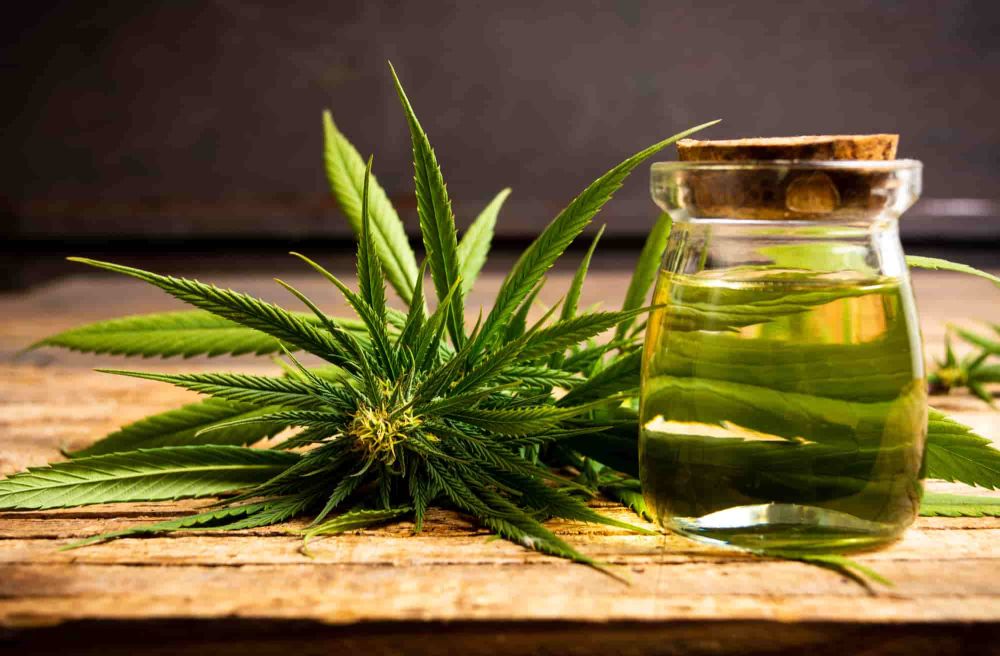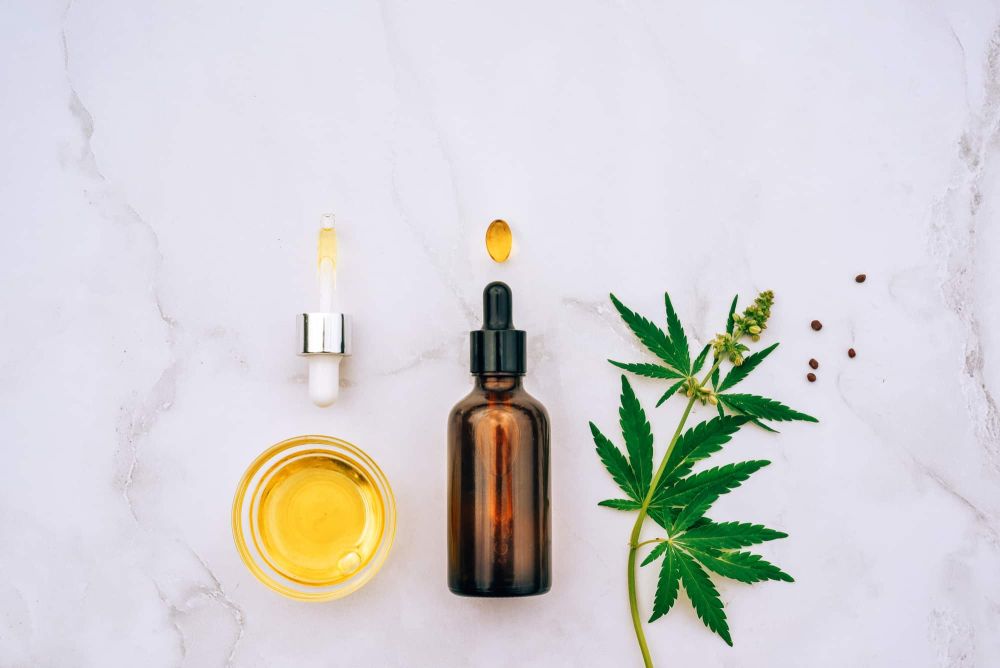Marijuana tinctures have become increasingly popular in recent years due to their ability to offer a more discreet and convenient way of consuming marijuana. Unlike smoking, which can be associated with harshness on the throat, tinctures provide an easy way for individuals to enjoy the effects of cannabis while eliminating most of the harmful side effects. This article will explain the basics of marijuana tincture consumption and what you need to know before using them.
A cannabis tincture is a liquid form of cannabis that offers users all the benefits without any smoke inhalation. It’s made by extracting cannabinoids from dried or cured buds and combining them with a neutral spirit such as vodka. The result is a potent solution that has been known to produce powerful psychoactive effects when ingested orally. Tinctures are also highly versatile, allowing users to adjust potency levels depending on their desired experience.
With so many potential uses and health benefits, it’s no surprise why marijuana tinctures have become such a hit among medical patients and recreational consumers alike. From helping alleviate pain symptoms to providing relief from anxiety or depression, this simple yet effective method of cannabis consumption has much to offer its users. Keep reading to learn more about how marijuana tinctures work and how they could potentially benefit your life!
 What is a Marijuana Tincture?
What is a Marijuana Tincture?
What is a marijuana tincture? A cannabis tincture is an extract of the cannabis plant made with grain alcohol. It has been used for centuries around the world as an alternative form of medicine. But what exactly are they and why do people use them?
Tinctures offer a unique way to consume cannabis extracts without having to smoke or ingest edibles. The process uses ethanol, which pulls out all of the cannabinoids from the plant material and binds it into liquid form. This makes them easier to dose accurately than other methods, so you can get just the amount that’s right for you. Additionally, because there’s no combustion involved, there are fewer toxins created during consumption.
By combining different strains of marijuana with various types of alcoholic solvents like vodka, rum, or brandy, individuals can create bespoke blends that target specific ailments and symptoms. This allows users to customize their experience when using a tincture to achieve the desired effects while avoiding any potential side effects associated with smoking cannabis or eating edibles. Tinctures provide relief quickly due to their fast absorption rate; this means that patients who need immediate relief may find this method more desirable than other forms of medication.
Overall, marijuana tinctures provide many benefits over traditional forms of consuming cannabis by allowing users to control both dosage amounts and strain combinations. They have become increasingly popular amongst medical professionals and recreational consumers alike due to their convenience, accuracy, customization options, and quick-acting relief capabilities.
History Of Use
Cannabis tinctures have been around for centuries, with many believing that they first appeared in Europe and North America during the 1800s. Throughout this time, physicians and scientists have relied on these extracts to treat a variety of illnesses. They became increasingly popular across Asia and South America, with both recreational and medicinal users incorporating them into their daily routines. Additionally, herbalists throughout these regions would regularly combine herbs with potent tincture ethanol alcohol to create natural remedies for specific ailments. Today, marijuana tinctures remain highly sought-after due to their convenience, accuracy, and ability to provide quick-acting relief through the administration of THC tinctures or cannabis extract.
Today, marijuana tinctures remain one of the most common forms of cannabis consumption around the world. This is due largely to their ease of use and ability to provide quick relief from symptoms associated with chronic pain or illness. The following are some reasons why tinctures continue to gain traction:
1) Tinctures offer precise dosing by providing an exact measurement of cannabinoids;
2) They can be made with any type of strain combination you prefer;
3) There’s no need for combustion when consuming a tincture;
4) These products are available at most medical marijuana dispensaries.
Overall, it’s easy to see why marijuana tinctures are becoming increasingly popular among those looking for alternative forms of medication or recreation. By allowing users to control dosage amounts while avoiding harmful toxins, this form of cannabis consumption provides numerous benefits over traditional methods like smoking or eating edibles. Moving forward, let’s take a look at what components go into making a typical marijuana tincture.
 Components Of Tinctures
Components Of Tinctures
Crafting tinctures involves extracting cannabis oil from either flowers or leaves before combining it with either high-quality, high-proof grain alcohol or glycerin. This solution is then poured into small bottles with droppers for easy consumption. The potency of any given tincture greatly depends on its concentration levels and should be taken into account when deciding the desired dose; opting for lower to moderate concentrations is the best approach for beginner users.
Marijuana tinctures provide a wide range of benefits, including quick relief from symptoms associated with chronic pain or illness. However, users should always exercise caution when creating and using their cannabis tinctures, as well as ensure they have quality CBD tinctures to get the most out of their high-grade product.
Taking all this into account, there’s no denying that marijuana tinctures offer numerous benefits over traditional methods like smoking or eating edibles. They’re fast acting yet precise in terms of dosing – allowing users to tailor their experience according to individual needs and preferences. With that being said, let’s now take a look at what one should consider when purchasing a tincture product.
What To Look For When Buying A Tincture
When purchasing a cannabis tincture, there are several important factors to consider. From potency and dosage to packaging and ingredients, users must take the time to understand what they’re buying before making any purchases. Here are some key elements buyers should look out for:
Potency: Look for products with high concentrations of THC or CBD – depending on your needs – as these will provide more powerful effects than lower-potency options.
Dosage: The amount of tincture you need depends heavily on the desired outcome; so make sure to check the label for exact dosages in milligrams (mg).
Packaging: Always opt for glass bottles instead of plastic ones as this can help preserve the quality of the product over time.
Ingredients: Check if any plant matter is present in addition to oil extractions as these can have an impact on taste and efficacy.
Once you’ve taken all these points into account, finding a reliable tincture product shouldn’t be too difficult. With their precise dosing capabilities and fast-acting effects, marijuana tinctures offer users an effective way to manage their symptoms without having to worry about smoking or ingesting edibles. Now that we know how to purchase one safely, let’s move on to storage and shelf life considerations.
Storage And Shelf Life
Storing THC tincture and CBD tincture is crucial in maintaining the freshness and potency of each product. Keeping tinctures away from direct sunlight and sources of heat is the best way to ensure maximum shelf life. It’s important to store these products in dark glass jars at room temperature for optimal storage results.
The expiration date of glycerin-based cannabis tinctures may vary, but they typically last up to two years when stored properly. On the other hand, alcohol-based tinctures tend to have a shorter lifespan due to their lower sugar content. Botanical cannabis tinctures also have varying shelf lives depending on the type of oil used in extraction; olive oil extractions usually stay good for up to six months whereas coconut oil extractions can last for up to one year with proper storage conditions and high-quality cannabis tinctures.
No matter what kind of tincture you have, be sure that you check its expiration date regularly – especially if it has been sitting around unused for some time – as expired products can potentially lead to adverse effects or even health risks. With this in mind, let’s move on to safety considerations associated with using marijuana tinctures.
Safety Considerations
As with any drug, it is important to be aware of the safety considerations associated with marijuana tinctures. Though these products are generally safe for use, there are still some things you should keep in mind when taking cannabis orally.
First and foremost, because cannabinoids like THC and CBD can be absorbed directly into your bloodstream via digestion, they have the potential to interact negatively with certain medications or dietary supplements that may already reside in your digestive tract. Therefore, if you take any prescription drugs or herbal remedies regularly, it’s best to consult with a doctor before using marijuana tinctures as a form of treatment.
Additionally, due to their concentrated nature, ingesting too much of a cannabis tincture could lead to adverse health effects such as dizziness, nausea, and fatigue; moreover, this overdose risk increases even more if the product contains high amounts of THC or other psychoactive compounds. As such, start slow and carefully monitor how your body responds after each dose – especially if you’re new to taking medical marijuana in an edible format.
It’s also worth noting that while most states allow adults 21 years of age or older to purchase recreational pot products legally from licensed dispensaries and retail stores, many places still require patients who wish to obtain medicinal-grade marijuana (including tinctures) to get approval from a qualified physician first.

